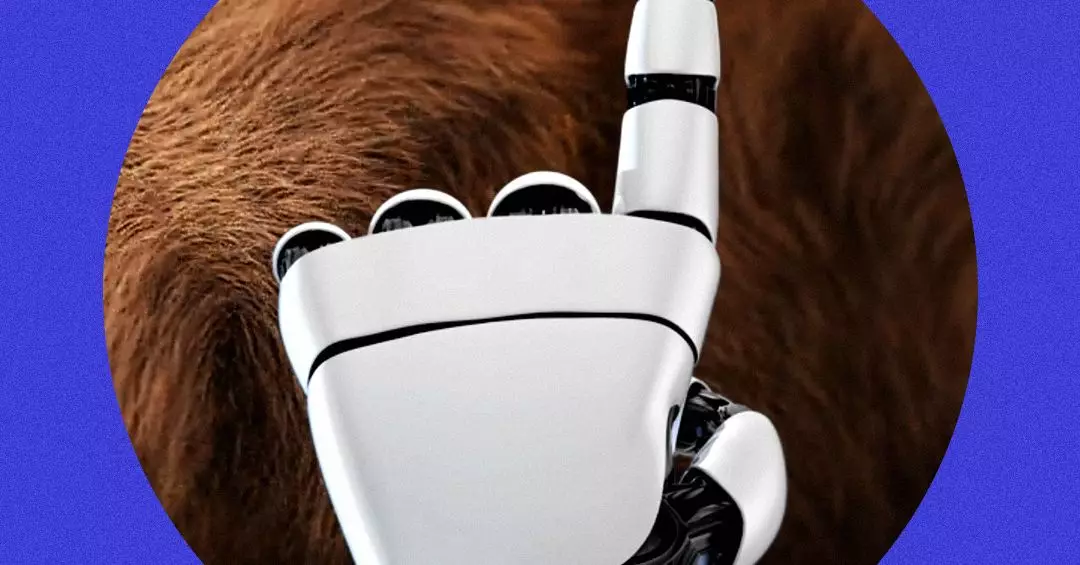Amazon’s innovation trajectory has consistently captivated the public and the industry alike, and its latest venture reveals a significant development with its new warehouse robot, Vulcan. Engineered specifically to enhance tactile prowess, Vulcan represents a pivotal shift in how robots interact with their environment. Unlike traditional robotic systems that often struggle with dexterity, Vulcan harnesses touch to navigate through shelves, identifying and retrieving the necessary items for shipping. This advancement could signify a major leap forward in the automation of warehouse operations.
Understanding Vulcan’s Design and Functionality
The core mechanics of Vulcan are both fascinating and practical. Equipped with a custom spatula-like appendage, this robot excels in a task that has long posed a challenge for mechanical systems: rummaging through varying product placements in densely packed storage areas. As Aaron Parness, Amazon’s director of robotics AI, elucidates, the robot’s ability to touch and apply pressure enables it to interact with surrounding items—allowing it to maneuver effectively without causing disruption. With sensors strategically placed on its joints, Vulcan can gauge the contours and edges of products, giving it the intelligence to distinguish between suitable targets and its surroundings.
This innovative combination of tactile feedback and machine learning forms the robot’s sophisticated operational framework. Parness highlights that this “special sauce” of software interpretation allows Vulcan to adapt its actions based on sensory data, thereby optimizing its performance in real-time. This level of adaptability could be revolutionary in fulfilling Amazon’s rapid shipping demands while minimizing human intervention.
Synergizing Humans and Robots in Fulfillment Centers
Vulcan’s presence in Amazon fulfillment centers is designed not to replace human labor but to enhance it. Working in tandem with human pickers, Vulcan aims to alleviate the physical toll that comes from labor-intensive tasks—like reaching for items located on high or low shelves. This collaborative model marks a paradigm shift within warehouse operations; instead of a robot-centric workforce, the synergy between human and robotic efforts may lead to a more balanced and productive work environment.
Ken Goldberg, a roboticist from the University of California, Berkeley, provides a critical perspective on this advancement. His remarks underline the necessity of tactile enhancement in robotics, which has historically lagged behind human capability. While advancements in robotic touch sensing have made notable strides, matching the intricate sensitivity that humans possess remains a formidable challenge. Nevertheless, Vulcan’s introduction pushes the envelope further, suggesting that we may soon witness robots that can adeptly navigate the complexities of physical tasks with a semblance of human-like finesse.
The Future of Automation: Limitations and Realities
Despite the promising capabilities of Vulcan, both Parness and industry experts emphasize that full automation within fulfillment centers is not on the immediate horizon. The notion of a completely automated warehouse where robots handle every task independently—often referred to as “lights out fulfillment”—remains an elusive dream. Instead, the integration of robotic systems like Vulcan is envisioned as complementary to human workers, enhancing efficiency rather than rendering them obsolete.
This pragmatic approach to robotics serves a dual purpose: it keeps humans engaged in valuable work while harnessing robotic systems to take over the more physically taxing elements of the job. This collaboration could lead to improved job satisfaction among workers, as they are relieved from strenuous tasks and can focus on areas that require critical thinking and decision-making.
The Human Element in Robotics: An Enduring Challenge
As we stand at the cusp of what may be a robotics revolution, it’s clear that the human factor remains indispensable. The unparalleled tactile sensitivity and adaptability that humans display will continue to outpace current robotic technologies, as noted by Parness and Goldberg. This lingering gap reaffirms the notion that while machines like Vulcan can automate specific tasks, the immediate future will see a coalescence of human and robotic efforts that optimize operational efficacy.
Vulcan embodies not just technological advancement but a philosophical shift in how we perceive the role of robots within the workforce. The trajectory of automation is thrilling, yet it is grounded in the understanding that innovation does not always mean replacement; sometimes, it means enhancement. As Amazon continues to iterate on this technology, the dynamic between humans and robots will be crucial to shaping the future of work in fulfillment centers globally.

